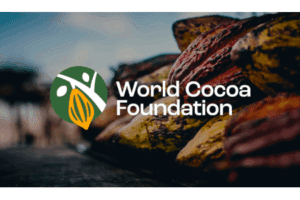A recent innovation in the chocolate sector revolves around the incorporation of rare cocoa in chocolate bars, so how does rare cocoa affect taste, cost and production
In the world of chocolate, innovation is a constant development. Whether it is innovation with regards to taste, aesthetics and texture – nothing is more important than finding new and immersive methods to impress the consumer. And there is no greater pride that any confectionery producer or manufacturer may have than creating the next big chocolate trend that consumers swarm for. One niche trend that has developed in recent years is the incorporation of rare cocoa into the chocolate making process. With that being said, this article wishes to assess what rare cocoa is, how popular it is becoming and how confectionery companies are responding to this new product.
What is rare cocoa?
Rare cocoa, or otherwise commonly known as “uncommon cocoa”, is simply a high-quality cocoa that is not usually used in the chocolate making process. There are a number of reasons for this – one of them being that this cocoa might be very expensive so only marketed to a very small consumer group. Another reason may be due to the fact that the cocoa itself is actually very hard to locate and grow in various tropical locations.
There are a variety of rare cocoa’s that are known to chocolate makers. One of these incredible rare coco’s is Piura Blanco. Piura Blanco, over the years, has grown back from near extinction to become one of the top-awarded cacaos worldwide. Piura Blanco is a white cocoa and only makes up around 0.1% of the world’s harvest. They are therefore very rare and immensely sought after by cacao producers and chocolate experts. Most noticeably, their ivory-coloured beans taste less bitter. The brown colouring agents of average cocoas contain bitter substances. A less bitter cacao bean allows for the finer aromas to flourish. Adding to this, cacao genetic experts believe that the Piura Blanco is an “albino” mutation of an older native cacao of which only the “albino” offspring survived in the forgotten corner of the dry Piura Valley.
One of the rarest forms of cocoa is known as Nacional Cocoa. This is found in areas of South America such as Ecuador and Peru. Some experts in the 21st century had formerly considered the Nacional bean to be extinct. Pure genotypes of the bean are rare because most Nacional varieties have been interbred with other cocoa bean varieties. Nacional are homozygous and moderately large, pods usually bear a yellow-orange tint when ripe, oval shape of semi-smooth surface with shallow ridges. The seeds/beans are surrounded by potent citric-floral pulp and are typically larger and rounder than those of other varieties. They also require a shorter fermentation cycle. The flavour profile is slightly more complex, and the bean is renowned for its floral aroma too.
To read more see our latest issue here.
Media contact
Editor, International Confectionery
Tel: +44 (0) 1622 823 920
Email: [email protected]









